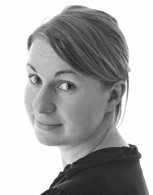Ofcom UK broadband speed map shows wide areas of internet underinvestment
An interactive map of broadband speeds has revealed large sections of the UK need investment in internet connectivity.
An interactive map of broadband speeds has revealed large sections of the UK need investment in internet connectivity.
Ofcom has launched the UK's first interactive map of fixed-line broadband, using data provided by broadband infrastructure providers.
Around 68% of UK premises have a fixed broadband connection with the average maximum speed of 7.5Mbps, while 14% of customers who have fixed broadband connections currently receive speeds of under 2Mbps, found the data.
Earlier this year Jeremy Hunt, secretary of state for the Department of Culture, Media and Sport (DCMS) outlined plans to provide all homes and businesses in the UK with access to at least 2Mbps broadband. He said superfast broadband should be available to 90% of people in each local authority area. Superfast broadband services are generally considered to be those that run at over 24Mbps.
The government has allocated £530m to assist in providing the UK with the best superfast broadband network in Europe by 2015.
Ofcom published the map as part of its requirement to submit a report on the UK's communications infrastructure to the DCMS every three years.
Each geographical region has been ranked according to a score based on availability of superfast broadband; average broadband take-up; actual speeds for ADSL and the percentage of homes with broadband currently not receiving 2Mbps speeds. The regions have been colour coded based on these criteria, with green ranking highest and red the lowest.
The City of Brighton & Hove has the highest take-up of fixed broadband services with 80%, while Edinburgh has the fastest average maximum speeds, with 10.1Mbps followed by Bristol at 9.9Mbps, found the data.
Around 97% of addresses in Northern Ireland were served by superfast broadband due to the completion of major investment by the Department of Enterprise Trade and Investment in Northern Ireland, in conjunction with BT.
Not surprisingly, rural areas tend to have lower speeds and a greater proportion of customers receiving speeds of less than 2Mbps. This is primarily because copper telephone lines tend to be longer in these areas and broadband speeds delivered over these lines reduce with increasing line length, said Ofcom. In addition, the low housing density also makes it more expensive to build new superfast cable and fibre-based networks in these areas.
Ofcom Chief Executive, Ed Richards, said: "We are now developing a clear picture of the UK's fixed broadband infrastructure and how it delivers for consumers. We hope that this information will stimulate further rollout of broadband infrastructure and better performance for households and businesses."
Clodagh Murphy, director of Eclipse Internet: "This clearly points towards the need for more investment in upgrading networks and technology. There are two key aspects to consider when increasing broadband penetration in the UK - one is the universal service commitment of 2Mbps for customers, and the other is targeting those areas that can receive a fast service, but where the uptake is low."
The latest published figures from Virgin Media and BT suggest there are fewer than just 500,000 subscribers to superfast broadband across the UK, equating to fewer than 3% of broadband homes, said Ofcom.








